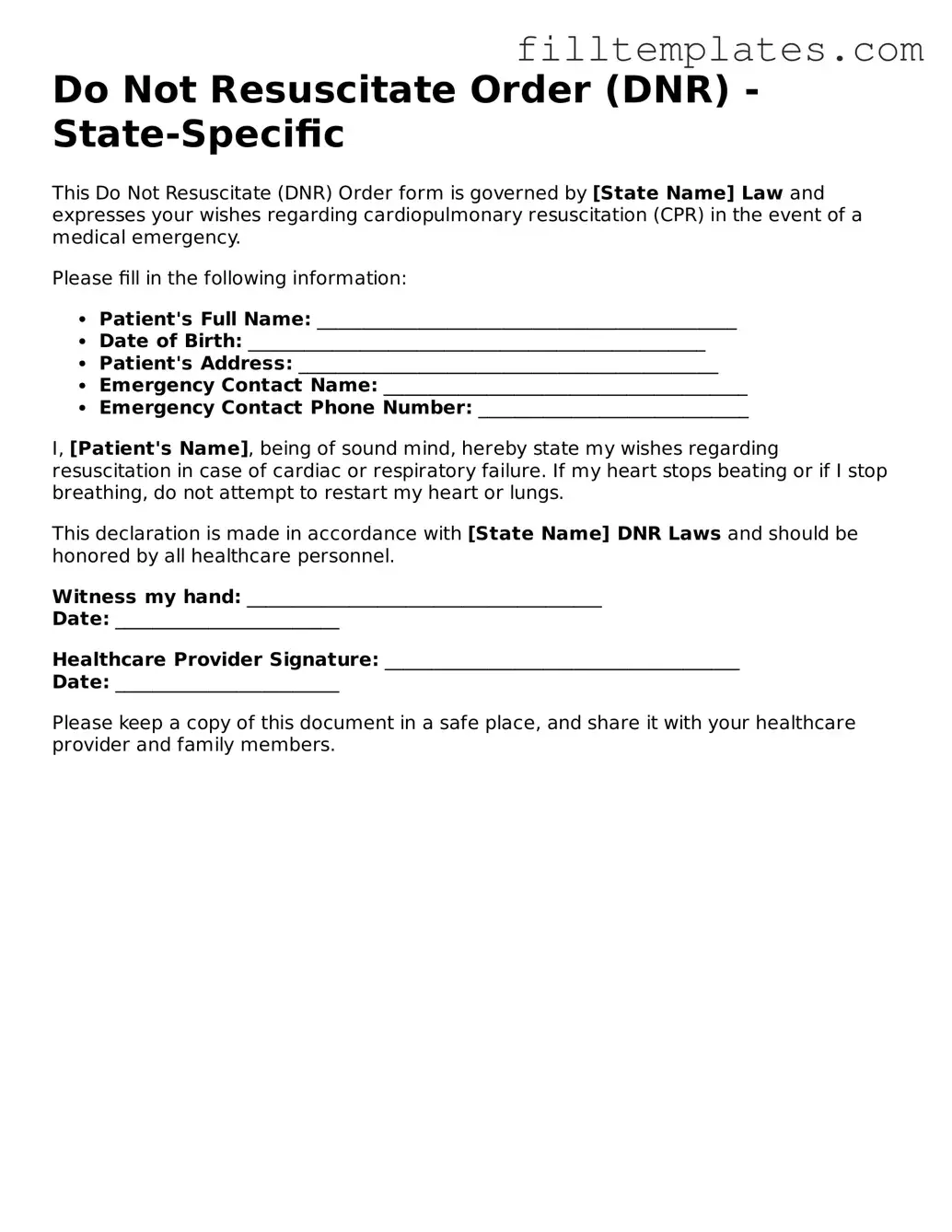Do Not Resuscitate Order (DNR) - State-Specific
This Do Not Resuscitate (DNR) Order form is governed by [State Name] Law and expresses your wishes regarding cardiopulmonary resuscitation (CPR) in the event of a medical emergency.
Please fill in the following information:
- Patient's Full Name: _____________________________________________
- Date of Birth: _________________________________________________
- Patient's Address: _____________________________________________
- Emergency Contact Name: _______________________________________
- Emergency Contact Phone Number: _____________________________
I, [Patient's Name], being of sound mind, hereby state my wishes regarding resuscitation in case of cardiac or respiratory failure. If my heart stops beating or if I stop breathing, do not attempt to restart my heart or lungs.
This declaration is made in accordance with [State Name] DNR Laws and should be honored by all healthcare personnel.
Witness my hand: ______________________________________
Date: ________________________
Healthcare Provider Signature: ______________________________________
Date: ________________________
Please keep a copy of this document in a safe place, and share it with your healthcare provider and family members.
